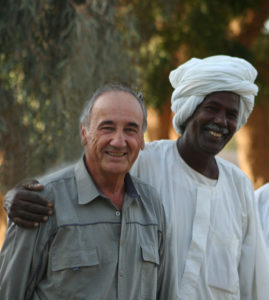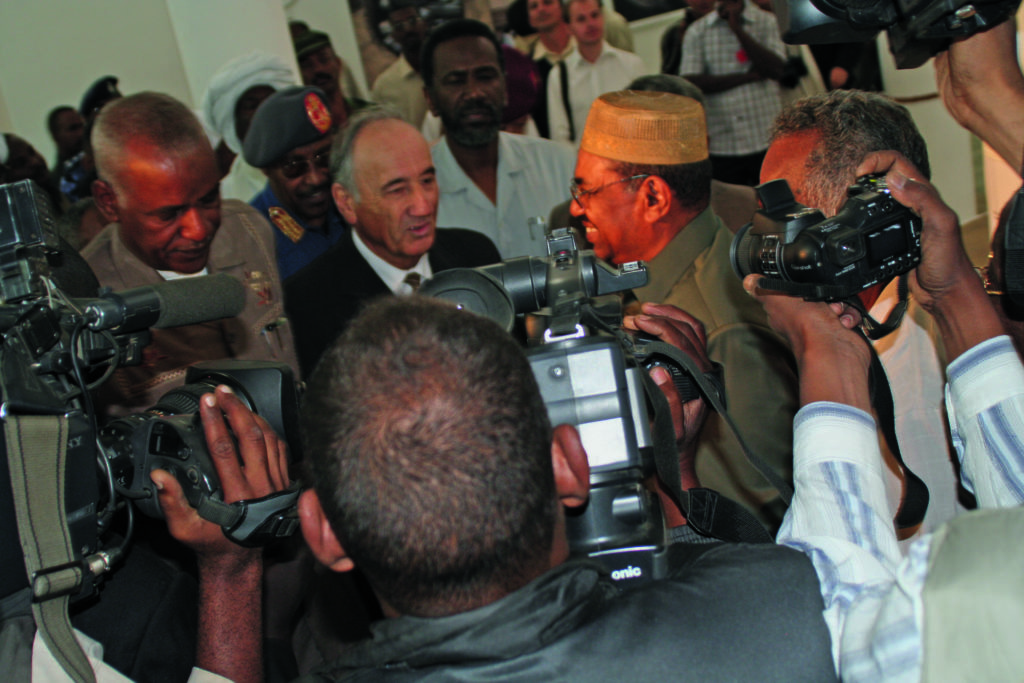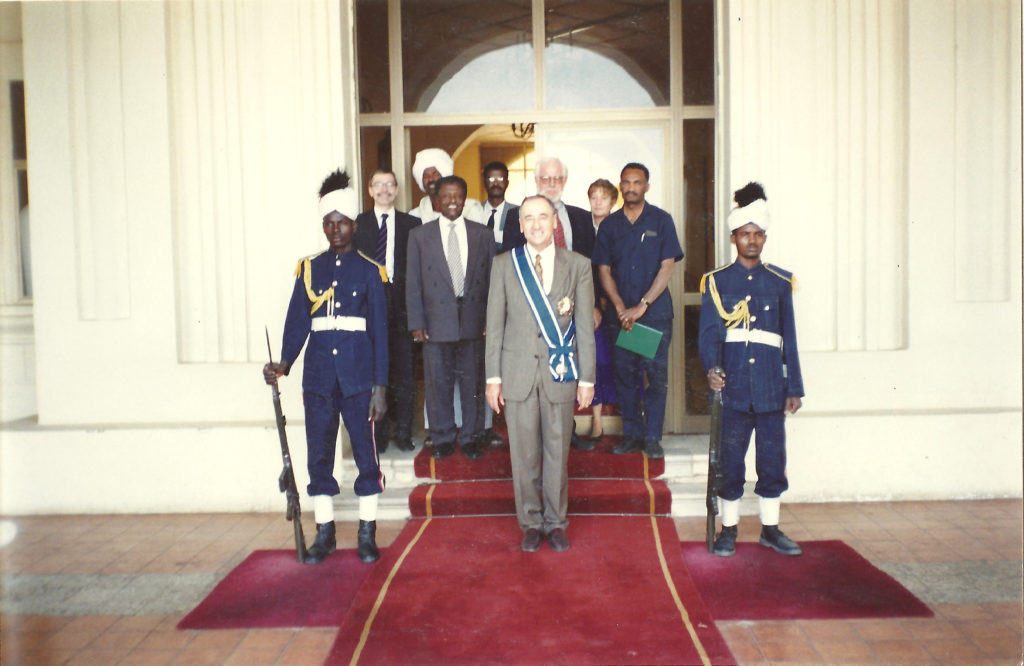The mission and Sudanese population
The appropriation of their past by the Sudaneses
 “The appropriation of their past by the Sudaneses first of all appeared in the permanent relationship which we have, within the framework of Swiss missions and French-Sudanese with the inspectors of the service of Sudanese Antiquities and the conservative of the museum of Kerma. Our role and our responsibility are to try to explain to these specialists and persons in charge the interest of their heritage and the manner of emphasizing it, by way of understanding the men who preceded them. It is a sometimes difficult task, because we have ourselves our own design of this trade and documentation. The Sudaneses have another culture, which makes difficult the comparisons and our collaborations. But the deep friendship which was woven very quickly improved our relations. From the point of view of the formation, we did the utmost so that the director of Antiquities passes his thesis to Lille. I was member of the committee of the jury of this thesis. One of the most erudite people currently on Sudanese archaeology is Salah edin Mohamed Ahmed, this same director of Antiquities, now implied in the project of Qatar, country which gave a considerable sum to emphasize, to protect and study the Sudanese heritage. It is the continuation of our action of ground. Inspectors of Sudanese Antiquities are currently in France, in Italy, in the United States and in England. It is a first contact between the Western countries and Sudan. ”
“The appropriation of their past by the Sudaneses first of all appeared in the permanent relationship which we have, within the framework of Swiss missions and French-Sudanese with the inspectors of the service of Sudanese Antiquities and the conservative of the museum of Kerma. Our role and our responsibility are to try to explain to these specialists and persons in charge the interest of their heritage and the manner of emphasizing it, by way of understanding the men who preceded them. It is a sometimes difficult task, because we have ourselves our own design of this trade and documentation. The Sudaneses have another culture, which makes difficult the comparisons and our collaborations. But the deep friendship which was woven very quickly improved our relations. From the point of view of the formation, we did the utmost so that the director of Antiquities passes his thesis to Lille. I was member of the committee of the jury of this thesis. One of the most erudite people currently on Sudanese archaeology is Salah edin Mohamed Ahmed, this same director of Antiquities, now implied in the project of Qatar, country which gave a considerable sum to emphasize, to protect and study the Sudanese heritage. It is the continuation of our action of ground. Inspectors of Sudanese Antiquities are currently in France, in Italy, in the United States and in England. It is a first contact between the Western countries and Sudan. ”


Le musée de Kerma et l’identité du Soudan
“The creation of the museum of Kerma was the occasion to show the interest of our work to a broad Sudanese and African public, which at the beginning was a little being wary, then realiserealised which they were its roots. Little by little, the museum became a place of meeting, where men, women and children find themselves very regularly to discover their heritage. The archaeological site and the museum of Kerma join together nearly 25,000 to 30,000 people each year. That amuses me, because under the cathedral of Geneva where we intervened in the same way, with an important archaeological site at the European level, one has between 15,000 and 20,000 visitors. On the spot, it is felt that we succeeded in our company. Another element of valorization of the heritage, links with the universities and universities of Karthoum, from which the students come to visit to us on the sites. I am at their disposal to explain our work, the manner to them of doing it, our discoveries, which relate to their past directly. When I finish the season with Kerma, I go to Khartoum where I am likely to be invited by various institutions, on the initiative of the old ones of Nubie, in the presence of very many political officials, scientists originating in Nubie. It came 1,600 people to the one from my conferences, including four ministers, about twenty ambassadors, about forty professors of university! It was indirectly, in the capital of this country, a recognition of the work carried out by our team, but also the demonstration of a fundamental interest for the knowledge of the identity of Sudan. On this occasion and a previous occasion, I was received by the members of very a large family of Nubie, kings, Mélik, a family of 2,000 people at least, divided in the whole world. At the time of a very great festival, they named me effective member of this family. And it is perhaps my greater pride. I would say that this success near the populations of Sudan touches me, because it is useful for the future of the country. I think that it belongs to the future generations of Sudan to understand their African origins, these complex States, these kingdoms and their traditions, their architectural type, their manner of living… Currently, the result of our work constitutes a kind of stage between Egypt and central Africa. I believe that we made or we make the proof that it is worth to be concerned with past of central Africa, because I am certain that at the time where in Europe the man lived in caves in an extremely rudimentary way, in Africa took seat a prehistory and a history of first importance. Simply, it is not known. But the risk in the modern world where any advance very quickly, where the dynamism is preached like a religion, is to see disappearing the vestiges from this African civilisation before recognizing them. Because archaeology requires to be patient and the studies will take time. It is that the problem of the next generation: to find the average politico-soldiers to pacify these regions and to try to find its heritage and its history. ”
Charles Bonnet
